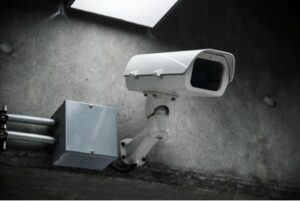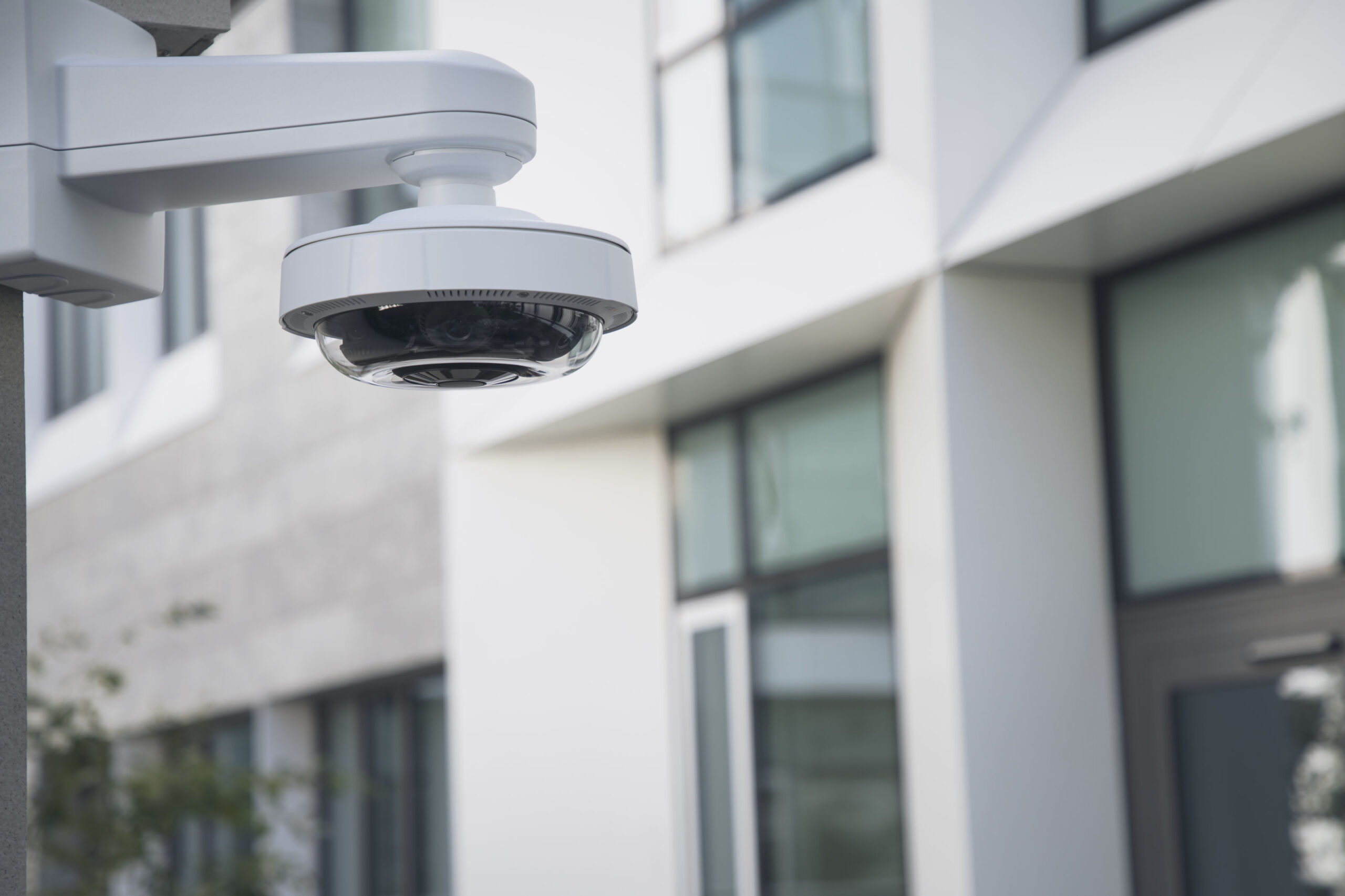As a leading provider of security services for clients in Brampton, Mississauga, and other areas of the GTA, we at Vista Security specialize in offering top-of-the-line video security solutions and video surveillance systems to help protect your property and assets. But what is video surveillance, and what are your options?
In this comprehensive guide, we will discuss the basics of CCTV and IP video surveillance, explore different camera types and their uses, and delve into the numerous benefits of video surveillance solutions. We will also outline the guidelines set by the Office of the Information and Privacy Commissioner of Ontario, which are important to ensure the responsible use of video surveillance systems.
What is video surveillance?
Video surveillance involves the monitoring and recording of activities within a specific area for security purposes. This is typically done with the help of cameras that capture and transmit video footage to a remote location for storage and analysis. Video surveillance has become an essential tool for deterring crime, monitoring property, and providing evidence when needed. When it comes to video security solutions, you will often see two mentioned: CCTV and IP.
What is CCTV vs. IP video surveillance & what’s the difference?
CCTV (Closed-Circuit Television) is a traditional analog video surveillance system that uses coaxial cables, or network cable combined with power cable, to transmit video signals from cameras to a central location for monitoring and recording. The quality of CCTV footage can vary, and it may be affected by factors such as cable length and environmental conditions.
IP (Internet Protocol) video surveillance is a newer digital technology that uses computer networks to transmit video data. IP cameras capture high-quality video footage and send it over the internet to a central server or storage device. This allows for better image quality, remote access, and scalability using only one network cable.
Here are some key differences between the two:
- Image quality: IP cameras generally offer higher resolution video, providing clearer images and better detail than CCTV systems.
- Transmission: CCTV systems use coaxial cables or a combination of network and power cables, while IP video surveillance systems use computer networks and the internet.
- Scalability: IP systems are more scalable, allowing for easy addition or removal of cameras without rewiring.
- Remote access: IP video surveillance provides remote access to live and recorded footage, while CCTV systems typically require onsite monitoring.
Learn more about our CCTV and IP video surveillance services.
Types of CCTV and IP cameras and their uses
There are various types of cameras available for both CCTV and IP video surveillance systems. Some common types include:

1. Dome cameras: These cameras are housed in a dome-shaped casing, providing a discreet and unobtrusive appearance. They are suitable for indoor and outdoor use and can be used in retail spaces, offices, and residential buildings.

Image by rawpixel.com on Freepik
2. Bullet cameras: These cameras have a cylindrical shape and are ideal for outdoor use. They can be easily mounted on walls or ceilings and are commonly used for monitoring parking lots, building exteriors, and other outdoor areas.

3. PTZ (Pan-Tilt-Zoom) cameras: PTZ cameras can be remotely controlled to pan, tilt, and zoom in on specific areas. They are suitable for large spaces such as parking lots, shopping centers, and public areas.
4. Hidden cameras: These cameras are designed to blend in with their surroundings, making them difficult to detect. They can be used for discreet monitoring in areas where overt surveillance may not be appropriate.
What are the benefits of video surveillance solutions?
Video surveillance solutions offer several benefits for businesses and properties, including:
- Crime deterrence: The presence of security cameras can discourage potential criminals from targeting your property.
- Evidence gathering: Video footage can be used as evidence in the event of a crime or dispute.
- Monitoring: Video surveillance allows you to monitor your property in real time, giving you peace of mind and the ability for you and your security partner to respond quickly to any incidents.
- Cost-effectiveness: With advances in technology, video surveillance systems have become more affordable and accessible, making them a cost-effective security solution.
The Office of the Information and Privacy Commissioner of Ontario’s guidelines for the use of video surveillance
Of course, surveillance does have privacy implications, so it’s important to understand what the Office of the Information and Privacy Commissioner of Ontario has established as guidelines to ensure the responsible use of video surveillance. Here is a quick summary of the key points:
- Necessity: Organizations should assess the need for video surveillance and consider its potential impact on privacy.
- Transparency: Organizations must inform individuals of the presence of video surveillance and the purpose for its use.
- Limiting collection: Video surveillance should only capture necessary information and avoid monitoring areas where people have a reasonable expectation of privacy.
- Security: Organizations must ensure that video surveillance data is stored securely and access is restricted to authorized individuals.
- Retention: Video footage should be retained for a limited period, and organizations should have policies in place for the safe disposal of data.
Choosing the right video security solution for your needs
Selecting the right video security solution for your property depends on various factors, such as your security objectives, budget, and the layout of your property. Follow these tips to help you choose the best video surveillance system:
- Assess your security needs: Determine the specific areas you want to monitor and the level of detail you require in the recorded footage.
- Select the appropriate camera types: Consider the different types of cameras and their uses, and choose the ones that best suit your needs.
- Consider storage requirements: Factor in the amount of storage you will need for video footage and whether you prefer local or cloud-based storage.
- Evaluate system compatibility: Ensure that your chosen video surveillance system is compatible with your existing security infrastructure.
- Plan for future expansion: Opt for a scalable system that allows you to add or remove cameras as your security needs change.
The role of professional security services in video surveillance
While selecting and installing a video surveillance system is a critical step in securing your property, partnering with professional security service providers like Vista Security can enhance the effectiveness of your security measures. Some benefits of working with a professional security company include:
- Expertise: Security professionals have the knowledge and experience to recommend the best video surveillance systems and cameras based on your specific needs.
- Installation: Professional installation ensures that your video surveillance system is set up correctly and functions optimally.
- Maintenance: Regular maintenance and system updates by security experts can help prevent potential issues and prolong the life of your video surveillance system.
- Remote monitoring: Security companies can provide remote monitoring services, allowing for 24/7 surveillance and rapid response to any incidents.
Discover seven reasons why Vista is a valued security provider in Ontario.
The importance of integrating video surveillance with other security systems
To create a comprehensive security solution for your property, it is crucial to integrate video surveillance with other security systems, such as access control and intrusion detection. Integrating these systems with the help of an experienced security provider like Vista can help enhance overall security, streamline management, and improve efficiency. Further benefits of integration include:
- Unified management: An integrated security system allows you to manage all aspects of your security from a single interface, simplifying system management and reducing the likelihood of human error.
- Real-time response: Integration enables real-time communication between systems, allowing for faster response to security incidents. For example, if an intrusion detection system is triggered, the corresponding video footage can be instantly accessed and assessed.
- Improved situational awareness: Combining data from various security systems can provide a more comprehensive understanding of the security situation, enabling better decision-making in response to potential threats.
- Customized alerts: Integrated systems can generate customized alerts based on specific events or conditions, ensuring that you are informed of any critical security incidents.
Here are five security solutions that every business should consider.
Best practices for maintaining your video surveillance system
To ensure that your video surveillance system remains effective and continues to provide optimal performance, it is essential to follow best practices for maintenance and upkeep. Some recommendations include:
- Regularly inspect cameras: Periodically check your cameras for physical damage, dirt, or obstructions that could affect image quality. Clean camera lenses and housings as needed to ensure clear images.
- Update software and firmware: Keep your video surveillance system up-to-date by regularly updating software and firmware, which can help protect against security vulnerabilities and improve system performance.
- Monitor storage capacity: Regularly check the storage capacity of your video surveillance system to ensure that there is sufficient space for new recordings. Delete old footage according to legal guidelines and your retention policy to free up storage space.
- Test camera positioning: Verify that cameras are positioned to provide optimal coverage of the areas you want to monitor, and adjust camera angles as needed to maintain adequate visibility.
Video analytics and its role in enhancing video surveillance
Video analytics is an advanced technology that uses artificial intelligence (AI) and machine learning algorithms to analyze video footage and identify specific patterns, behaviours, or events. By incorporating video analytics into your video surveillance system, you can unlock additional benefits and improve overall security. Some applications of video analytics include:
- Intrusion detection: Video analytics can detect unauthorized entry into restricted areas, alerting security personnel in real-time.
- Motion detection: AI-based motion detection can differentiate between human, vehicle, and animal movements, reducing false alarms and allowing for targeted monitoring.
- Facial recognition: Video analytics can identify individuals by comparing captured facial images to a database of known individuals, which can be used for access control or identifying persons of interest.
- Crowd monitoring: Video analytics can help monitor crowd size, density, and movement patterns in public spaces, providing valuable insights for safety and security management.
By integrating video analytics into your video surveillance solution, you can enhance the effectiveness of your security measures, streamline monitoring, and make better-informed decisions in response to potential security incidents.
Trust the expert team at Vista for your video surveillance needs.
Video security solutions, such as CCTV and IP video surveillance, are essential tools for safeguarding your property and assets. Understanding the differences between these systems, the various types of cameras available, and the numerous benefits of video surveillance solutions allows you to make informed decisions about the best solution for your needs. In addition, by adhering to the guidelines set by the Office of the Information and Privacy Commissioner of Ontario, you can also ensure that your video surveillance system is used responsibly and respects the privacy of individuals.
At Vista Security, we are committed to providing our clients in Brampton, Mississauga, and the GTA with top-of-the-line video security solutions. Learn more about our CCTV and IP video surveillance services and let us help you protect what matters most. By partnering with us, you can take advantage of our expertise, professional installation, ongoing maintenance, and remote monitoring services to enhance the effectiveness of your security measures.




